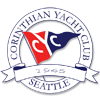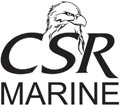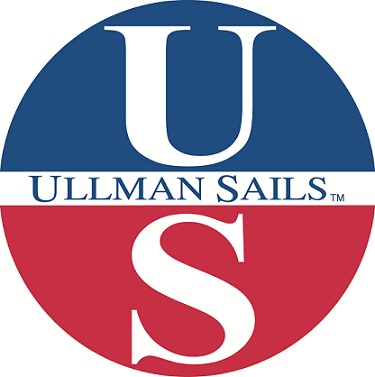From the Helm | Revamping the Race Book
Our racing program has been working very well for many years, especially for our long-standing participants. However, while our participation levels have stabilized, we need to make it easier to bring in new people and grow our events. This is driven both from the desire of every fleet and each of us to grow our sport, and at a program-wide level to support our overall initiative to repopulate and revitalize our club. We’re making progress on social programs and membership. Now we need to do the same with racing to keep that the core that makes our club special.
One of the things we hear even from our experienced racers is that our race documents are difficult to comprehend. When digging into this, we found a raft of issues that especially impact newcomers and race administration that together have lead us to introduce a package of changes.
All this exists in the context of being happy with the competitive game we play on the water, not wanting to change what isn’t broken, and wanting to make it more accessible and more manageable. Therefore, the objectives are the following:
• Organize and simplify for new participants to make our sport less overwhelming (in that regard – in the eyes of new, less experienced people – it is a bit broken)
• Make manageable for race organizers, race/protest committees, and business operations
• Get in line with the structure required by the rules and more in step with recommendations
• Set on the water expectations more thoroughly for people who don’t have years of background with our program
• Help get new race committee staff and volunteers up to speed more quickly
• Make it easier to introduce change for growth, including updates and new events
• Make compatible with sponsorship programs
• Support initiative to attract new participants and members
There is no intention to change the game we play on the water with our competitors, the equipment requirements, or eligibility, or change the nature of our events.
The most significant change in our race documents is to disentangle our notices of race and sailing instructions. This year, our “Race Book” contains registration policies, notices of race, sponsorship recognition, and some membership messaging. Each event has stand-alone sailing instructions so competitors can find what they need for a particular race and not have to wade through irrelevant content. The model for our sailing instructions is the NOOD regatta that we run with the full range of our fleets and equipment in the buoy racing format. With some modification, this also works for our three distance races, and the sailing instructions for our recent Blakely Rock race is a good example.
Some of the specific things you will find in the Race Book and sailing instructions are:
• Number of race fee price points reduced to 29 from over 100. Discount package pricing is now available for members only and a-la-carte pricing is same for members and guest (also known as future members).
• Fleet size minimum expectation moved to notices of race and Fleet Captain Race has flexibility necessary to support or rebuild our fleets.
• Practice starts when available from 45 to 15 minutes before the scheduled first warning.
• Schedule related expectations are set for each event and made consistent where practical. Weekend regattas start at 1100 both days. Number, duration, and “no warning after” expectations set broadly to accommodate our customary practice yet give new people a comfort level about what they might be getting themselves into.
• For consistency, all buoy racing series have one throwout at six races, except PSSC as a championship has none and Lake evenings retain preference for 1 at 4, 2 at 7, and 3 at 10.
• Logistics topics (such as guest moorage) moved to notices of race.
• Buoy course marks stay same in position and color, and letters ABC now used for windward marks and XYZ used for leeward marks. The prior use of ABC/XYZ was based on triangle courses that we no longer prefer. The updated lettering is easier for new people to learn for the windward/leeward courses we sail today and it’s simple enough you can toss your cheat sheets. Weather mark added for junior green fleets when applicable, which was piloted at Turkey Bowl. Rounding marks will be simply left to port and gates in effect when present.
• There will not be a “General Sailing Instructions” in addition to “Sailing Instructions” documents. The sailing instructions for each race will be complete.
• Weeknight racing starts after PSSR, instead of before, due to logistical considerations. The call on this was made last year but is a recent cause for concern, and is a good topic for creative problem solving and resolution through our fleet councils.
Some topics that people have asked about that are not changed in this process include:
• The race by race conventions of starting and/or finishing lines being “open” or “closed”.
• Equipment and safety requirements.
• Eligibility requirements.
Jon Henderson, our Fleet Captain Race, held an initial meeting on February 7th with representatives of most of our fleets to reactivate and engage our fleet councils and establish regatta chairpersons. Jon will be hosting another meeting soon to get more coverage and chairpersons for more of our events, with regularly scheduled meetings to follow according to the group preference. This forum is the right place for ongoing topics and making further improvements.
The Blakely Rock race held March 1st was the first test of the Race Book and event-specific sailing instructions. Our goal was to pursue our objectives without changing the real racing game that occurs on the water between competitors. While the wind was rather curious, the actual racing proceeded identically to how it has gone in prior years with no sailing differences caused by changes in race administration. While some people were hungering for the class breaks to be published sooner – a common issue driven by late registration – the feedback on our race administration changes was positive. It’s funny to think that having no material change was the goal of a great deal of work, but in this case we want to keep our racing while we improve our ability to share our racing.
Where a drive for helping less experienced people or simplicity through consistency across our program conflicts with the preferences of some of our members or fleets, we need to dispassionately work through the long-term priorities and trade-offs. Please feel free to directly contact me or Jon or representatives of your fleet. We look forward to finding and fixing the errors we’re entirely capable of making and getting on with a racing program that shares more of the racing we love with more people.
I’d like to thank all the people who worked together on this effort at fleet meetings, one on one, and over lengthy emails. As our prior materials got longer in the tooth, they got more intimidating to change. It was a long time coming and it all looks great thanks to all the input and careful consideration. It’s just a start though, laying some groundwork, and now we have to get more people out there!
See you on the water and around the club.
Brian Watkins
Commodore









